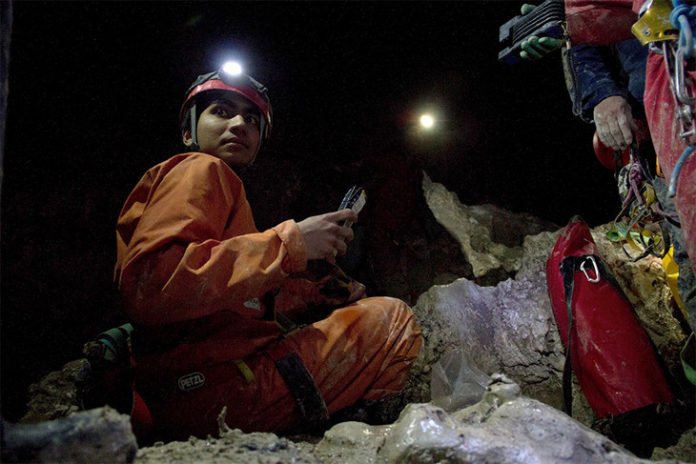According to new research by Penn State scientists, a massive cave in Italy can tell us about life on Mars and other planets. Scientists particularly identified biosignatures — or signs of the presence of life — about 1,300 feet below ground in the Frasassi Caves in central Italy.
Scientists noticed something intriguing and thus they started exploring the microbiology and geochemistry of the cave. They discovered varieties in the isotopic substance of iotas in the mineral gypsum, which is a weathering result of the give in’s arrangement. Not all gypsum is shaped by organisms, but rather gypsum framed by microorganisms will have an alternate proportion of isotopes in the iotas. This isotopic variety, in the combination with other information, demonstrates that life assumed a dynamic part in creating the gypsum.
Jenn Macalady, associate professor of geosciences said, “We asked, what does this have to do with biology? Can we use these isotopic variations to show that life was responsible for forming the cave?”
Scientists collected gypsum samples from the cave walls that were likely to have come in contact with fluids or moving air and used a mass spectrometer to study the isotopic ratio of the gypsum.
As microbes accelerate chemical changes, the presence of isotopic biosignatures could be used to spot the involvement of life forms in forming other minerals, not just those appearing in the Frasassi Caves.
Mars has caves formed by volcanic activity, which offers a hospitable underground environment for microbes to cling to. Mars also has fluids like carbon dioxide and water. Those fluids could allow microbes to interact with minerals, speeding up chemical reactions like what was found in the Frasassi Caves.
Macalady said, “I have spent about 15 years attempting to identify a biosignature that would be relevant to an actual mission to Mars. She said finding reliable biosignatures is key to detecting life on other planets.”
“If we were to find a similar environment on Mars, we could use this particular biosignature to test for the current or past presence of life. But I think more generally what we’re suggesting is that anytime you have microbes on a surface and a fluid moving past, the rates of reaction that the microbes generate would allow you to see variation in a signature like isotopes. The research is exciting because it’s not just an example. It’s a general prescription for looking for evidence of life.”
Scientists are now planning to examine what Frasassi cave levels can tell us about current and past life, possibly revealing what the new biosignature can tell us on a longer timescale.
Muammar Mansor, a postdoctoral researcher in the department of geological sciences at the University of Texas at El Paso who received his Ph.D. from Penn State said, “This research shows that life leaves footprints behind wherever they exist. My main passion for research is to study life in the universe through the interdisciplinary field of astrobiology.”
Their work is published in Astrobiology.
